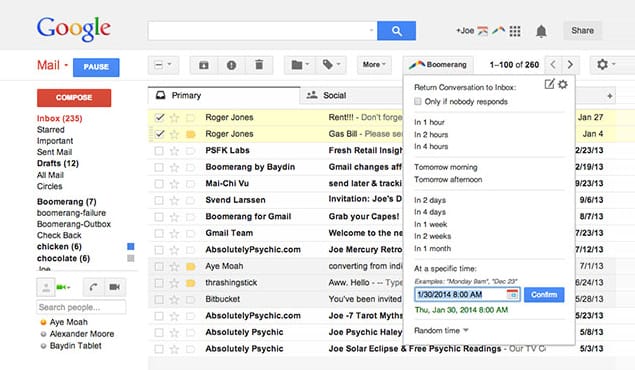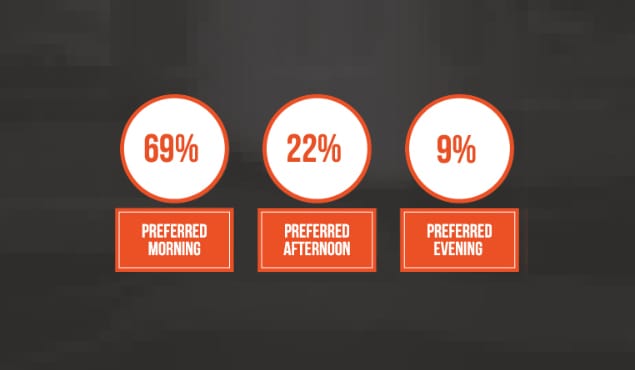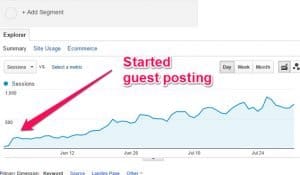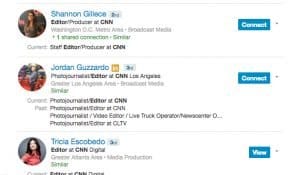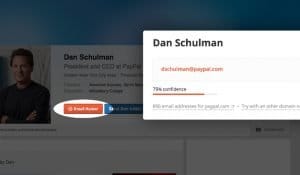“Yo, you had a chance to read my guest post yet? It will be too good for your readers, you have no idea. Kindly waiting your acceptance. Cheers.”
The editor’s mouse jabs the “trash” button as vigorously as possible. They drink more coffee than they should have as an involuntary response. They cannot sleep because of this, and lay awake all night, cursing the brash insensitivity of your follow up.
For those that have never been on the receiving end of guest post pitches, know this: it does not take much to annoy an editor. It’s because an editor at a blog that is worthy of receiving guest post pitches has to read through them daily, almost hourly, and most of the time they are complete crap.
That’s just the initial pitch, too.
If the editor is swamped (they always are), they won’t have responded to each poorly written pitch to say “no thanks!” but rather swiped them out of the inbox immediately. This results in the same poorly written pitcher sending out an email (usually automated) a week later, saying something akin to the quote above.
If the editor is smart, they have responded to you with a casual but firm “no”, or marked your poorly written pitch as SPAM so any future email you send will never reach their eyes. The SPAM marker is only for those incredibly lackluster pitches that do nothing right.
If the editor truly, actually forget about your pitch, a follow up is certainly appreciated.
Let me pull back the curtain to give you the perspective (and confidence) needed to pitch correctly, then follow up on that pitch correctly, so as to not annoy an overly sensitive editor.
Before Following Up, Pitch Correctly
The first thing you need to consider when it comes to guest posting is if you’re ready. By that I mean:
- Do you have a blog or regular publication of articles?
- Are you squarely in a niche? (You can be in more than one)
- Can people read your articles online?
- Are you smooth with words?
The above four things are, in my book, all necessary to start a successful guest post pitch email. If you don’t have any of them an editor is going to be slightly annoyed to hear from you at all.
This isn’t true for people with years and years of experience in a given field but no online writing experience; those people are considered true “experts” and most blogs will be happy to hear from them as long as they have a solid idea to present.
Assuming you nodded to the above four bullet points, it’s still important you send out your initial pitch correctly. If not, you will annoy the editor, and that editor will never respond to your follow up because they’re inflamed from the last time you tried to contact them.
Sending out a solid guest post pitch involves many things, the depth of which are too great to list in full detail in this article. There are plenty of articles that delve fully into that topic, so in a true blogger fashion, I will sum-up the most important bits for you below:
- Be Kind. Always be courteous in your emails. This applies to the pitch and the follow up. Respect goes amazingly far. You can even program respect into some email templates; there’s nothing like automated respect, or robot respect as some call it. (That’s a joke.)
- Follow the guidelines. Some blogs have ‘em, others don’t. Always search high and low for a set of guidelines because, if they exist, you will need to follow them. If you don’t? Well, the editor will drink way more coffee and curse your name into the wee hours of the night.
- Be concise. Unless the guidelines say they want your entire guest post in the pitch, or a novel about who you are and your qualifications, be concise. Your name, your idea, your bulleted summary, and a few links to your work is all that’s required. Along with “please,” “thank you,” and those other warm-hearted sentiments your mother taught you.
That’s the gist of it, and the perfect way not to annoy the editor out of the box.
How to Follow Up Without Being Annoying
Now we’re in the meat of the article (or the eggplant, if you’re a vegetarian), and it’s time to get really specific.
Annoying an editor with a follow up email is really easy. Easier than making a bowl of cereal. Why? Because editors are people, and people are finicky, and finicky people get annoyed.
That’s a generality, therefore it’s generally true. There are those amazing, first-class humans (sometimes editors) that do not get annoyed at small details, that type with glowing smiles no matter what comes through their inbox. Those individuals are saints, are not found frequently in the population, and can be worn down through the years by terrible pitches, follow ups, and all the interactions such things entail.
I’m going to list a number of scenarios that typically annoy editors when it comes to your follow up to a guest post pitch, then I’m going to explain how to avoid those scenarios at all costs.
These assume you are following the proper etiquette for emailing your guest post in the first place, meaning I will avoid telling you to “link to your articles, dummy!” or “follow their guidelines, dummy!” Because you already did all that.
1. Sending a Separate Email for the Check-In
Everyone likes to say that the youth of the world (millennials and younger) are whizzes with technology — that tablets and phones are like second hands and they can do anything with them.
This might be true, but it makes me wonder why so many follow ups to guest post pitches come in an email that is not linked to the first one that was sent. Sure, the author (you) might be a old-timer, but I’m not going to assume anything or point any fingers.
The scenario:
Your first email goes through splendidly. It’s to the right editor, in the right niche, following all the rules and guidelines of that publication. You don’t receive a response, so decide to send a follow up email.
You compose a new email to do this, enter in the editor’s email again, and send it off (being kind, concise, etc.). You simply refer to your guest post pitch, but don’t type it all out again.
What’s the problem here, you might think?
The problem is that this new email is not attached to the old email. Therefore the editor receives it like a loose piece of paper that was never stapled to the original document.
They’ll look at it, scroll around, shake their head, and exclaim “amateur!”, then hit the coffee bar.
The solution:
It’s really simple. Always, always, always “respond” to the first email you sent. This will show up in the editor’s inbox as a second email in the chain, allowing them to see your first email, place your pitch, and respond accordingly.
You can find your email in the “sent” folder of whatever email client you use.
2. Being Too Brief or Too Wordy
Editors are like the girl in Goldilocks — they want the pitch that is just right.
Assuming your original pitch didn’t have too many or too few words (it shouldn’t have!), you want to stay the course with your follow up email.
This, of course, means something different for the two different emails. You had to include a lot of information in your first email — in the second one, you are just saying “hello, remember me? I exist, I’m cool, let’s chat!”, without actually saying any of that (because it’s not professional).
Too Brief Scenario
“Hi, Hope your day is going well. I sent a guest post pitch last week. Have you looked at it? Thanks!”
While this maintains a certain level of kindness, the briefness of the email makes it all seem a little curt. This is a really fine line, though, and some editors will actually want a follow up this bare bones. You’ll have to feel it out, but in my world, this isn’t quite enough.
The Solution
Just write a little more.
“Hi [editor’s name], This is [your name] checking in about the guest post pitch I emailed a couple weeks ago. I bet you are super busy now due to [weather event, sporting event, time of year, religious holiday, anything that is topical and makes sense], so I thought I’d email. Cheers!”
A bit more context goes a long way.
Too Wordy Scenario
I’m not going to write out a whole email to illustrate how worthless a long email will be. A follow up should really not be more than one paragraph, unless you have something significant to say.
If your original guest post pitch had a time-based relevancy, you can mention this. Don’t take this time to tell the editor more about yourself, more about your article, or suck up to them by listing all the articles of theirs you have read over the last week and a half. It might raise an eyebrow, but not secure you the post.
3. Emailing after 3 P.M.
A study of guest post pitches showed that most editors liked receiving emails in the morning. Why? They aren’t itching to get home yet. They are actually awake from their coffee. They have a kinder heart because the day has not drained the soul out of them yet.
Whatever it is that makes the morning special, you’ll need to remember to capitalize on it.
The Scenario
Hitting the “send” button on your well-worded, concise follow up email at 4:45 PM. Just in time for the editor to see it, roll their eyes, and forget about it by the next day because it’s piled under a whole bunch of other stuff.
The Solution
Let’s see, I wonder what the solution could be to this vexing issue…just wait to send the email. If you find yourself ready and wanting to send a follow up email just glance at the time before you hit send. If it’s after 3 PM (or even after noon if you want to make sure an editor is jolly when they receive it), just wait to till the next morning. You can even get an email scheduler to send it off at a specific time.
4. Emailing Too Soon
You sent out a totally rad guest post pitch three days ago and, man, gosh darn, the editor just hasn’t responded. You’re unsure if their email works. Maybe it’s a dud…no, you didn’t receive a mailer daemon, you just haven’t heard. I mean, your pitch was so good, there’s no way they wouldn’t respond, even just to say, “thank you.” I guess I’ll send a follow up just to, you know, check in.
Well, partner, there’s nothing like shooting yourself in the foot before the duel.
Blogs with guidelines will tell you when you should follow up. They will usually request one of three scenarios:
- Don’t follow up. This means they’re on it, and if you don’t hear back it’s because your pitch was not worthy. If this is in their guidelines, respect it. You can send another guest post pitch, but not a follow up to your first pitch.
- Follow up after X amount of time. No-brainer. Follow up after the specified amount of days.
- Follow up if you haven’t heard anything. This one is a bit tricker because it doesn’t list a specific time frame, but implies they are semi-disorganized and could have missed your pitch.
The last example is the one I want to talk about, because it also applies when there are no guidelines.
Typically I wait a week and a half to two weeks to follow up for a medium-sized blog or smaller. If it’s a huge publication, I wait three weeks to hear back. If your article is time sensitive, you should have said that in your pitch, and also put in your original pitch that you would follow up in a couple days if you haven’t heard back.
Following up too early shows you aren’t seasoned in this business.
Conclusion: Make Sure you Follow Up
With all the above advice and my overly snarky tone, I don’t want to dissuade you.
It’s absolutely critical and necessary to follow up on your pitches. You took a good deal of time to research the publication, make an in-road with the editor, and put your idea out there. That’s all valuable, and in most cases deserves a response, even if it’s a “no.”
Unless the guidelines say specifically not to, make sure you follow up to every single pitch you send. Keep a spreadsheet of each pitch you send with a specified date for your follow up, then check the box to see.
You can follow up twice, but that’s about the limit. You’ll want the same stretch of time between your first and second follow up — after that, it’s moot. You can cross the blog off your list, too, because if you submit something solid and they don’t have the decency to email back, you won’t want to work for them.
Lastly, remember that at the end of the day an editor wants to find the gold mine: an amazing idea from a guest poster who knows what they’re talking about, writes well, and can work collaboratively.
Editors prize those people, and yet are human, too. They make mistakes, they miss emails, they have bad days. Following up makes sure you are heard, and being heard is key.
 ContentPowered.com
ContentPowered.com
